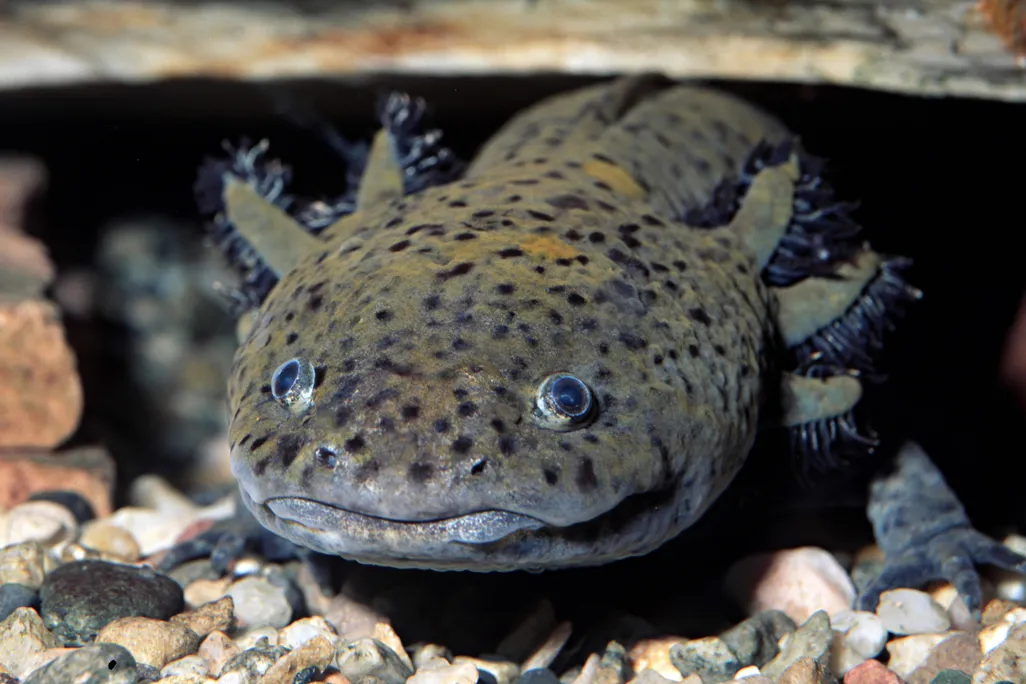WWW.SMITHSONIANMAG.COM
Captive-Bred Axolotls Can Survive in the Wild, Offering Hope for the Critically Endangered Amphibians
Captive-Bred Axolotls Can Survive in the Wild, Offering Hope for the Critically Endangered Amphibians
The popular salamanders are nearly extinct in the wild, where they are confined to a small system of canals in Mexico City. But a new study suggests released axolotls could thrive in their natural habitat as well as artificial wetlands
The charismatic salamanders known as axolotls can survive in the wild despite being bred in captivity, according to a new study.
Kevin Schafer via Getty Images
Axolotls, famous for their perpetually smiling faces, are critically endangered amphibians. Now, a new study offers some hope for the beloved species’ conservation.
A team of researchers released 18 captive-bred axolotls into wetlands in southern Mexico City—and they found that the animals could survive. Their work, which could pave the way to further reintroduction projects, was published in the journal PLOS One on Wednesday.
“This is a huge step, because in conservation programs when you have animals in captivity and you take them back to the wild … there’s a lot of mortality,” says Alejandra Ramos, a researcher at the Autonomous University of Baja California in Mexico and the study’s lead author, to Justine McDaniel at the Washington Post.
Axolotls (Ambystoma mexicanum) are salamanders that do not go through metamorphosis—instead, they stay in their tadpole-like phase for their entire lives and never transition to living on land. Though they once dwelled across several lakes in Mexico City, their habitat dwindled as humans diverted and drained the lakes to prevent flooding. Now, the amphibians’ only remaining natural habitat is a series of canals in Lake Xochimilco.
The researchers released eight axolotls in Xochimilco and ten in a pond at La Cantera Oriente, an artificial wetland. They tracked the animals—nine females and nine males—using radio transmitters and the help of volunteers who monitored each site at least twice a day over 40 days.
Not only did all the released axolotls survive the experiment’s duration, but the three that the team recaptured had gained weight. That showed the animals were hunting. “If they had been skinny or ill,” Ramos says to Anna Gibbs atScience News, “that would have been really, really bad for us.”
The researchers also discovered other interesting tidbits by monitoring the axolotls. For example, the animals socialize with each other, and they spend more time with specific individuals, which the scientists liken to friendships.
“One of the most surprising findings was that, in Xochimilco, older axolotls traveled shorter distances per day compared to younger ones,” adds Ramos to Laura Baisas at Popular Science. “The reason for this is still unclear, but it is possible that older individuals, through experience, are better able to select and defend high-quality territories with sufficient food, reducing their need to travel for foraging.”
After the study period concluded, researchers and locals observed a couple of egrets preying on axolotls. As a result, they suggest future captive-breeding programs incorporate predator awareness training before releasing the salamanders.
While axolotls are mostly dark-colored in the wild, the animals are sometimes bred to be white and pink when kept as pets.
Paul Starosta via Getty Images
Axolotls have special significance in Mexican culture. The animal is named after the Aztec god of fire and lightning, Xolotl, who disguised himself by taking on the form of a salamander in a legend. “If we lose this species, we lose part of our Mexican identity,” says co-lead researcher Luis Zambrano, a biologist at the National Autonomous University of Mexico, to Victoria Gill at BBC News.
The researchers note that the priority for the animal should be improving its natural habitat. Lake Xochimilco has been impacted by years of pollution and degradation, causing the salamander’s numbers to plummet over the last few decades, with the International Union for Conservation of Nature estimating that only 50 to 1,000 remain in the wild.
“If we can restore this [wetland] habitat and restore the axolotl’s population in a city of more than 20 million people,” Zambrano adds to BBC News, “I feel that we have hope for humanity.”
But the success of the axolotls in La Cantera Oriente suggests the species could also thrive in artificial wetlands. “It’s kind of like having a Plan B,” says Esther Quintero, a biologist with the nonprofit Conservation International Mexico who was not part of the study, to the Washington Post. “One can at least be sure that we have two different places in which we can restart the population.”
The findings underscore the importance of protecting endangered creatures’ habitats. “It’s like polar bears. The solution is not to translate them to our fridges,” Zambrano tells the Washington Post. “We have to preserve the North Pole in order to have polar bears. We have to preserve Xochimilco in order to have axolotl.”
Get the latest stories in your inbox every weekday.
